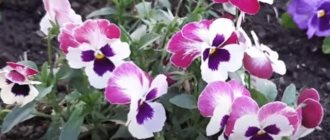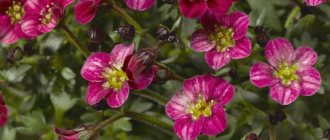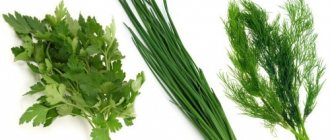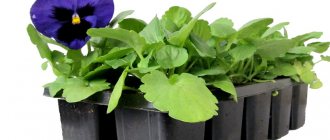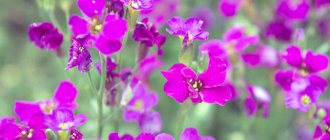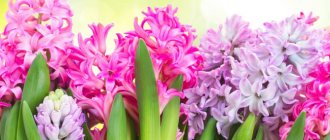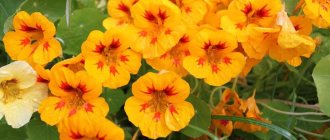Author: Elena N. https://floristics.info/ru/index.php?option=com_contact&view=contact&id=19 Category: Garden plants Published: February 27, 2019Last edits: November 03, 2020
- When to plant
- Growing conditions
- Wild tobacco (Nicotiana sylvestris)
The fragrant tobacco flower has long become a favorite of gardeners, thanks to its original aroma and the wide palette of shades in which its flowers can be painted. This plant attracts bees to the garden with its smell, and the variety of its varieties is simply amazing. The birthplace of fragrant tobacco is South America, and Christopher Columbus brought it to Europe. In nature, fragrant tobacco is a perennial, but in our climate it is grown as an annual crop.
Types and varieties of fragrant tobacco
The plant has several types. They differ in the shades of the petals and the height of the main stems.
Dwarf varieties
The plants are small, reaching a height of up to 30 cm. They look impressive along paths, near benches, as house flowers, in flower beds. It goes well with petunias and is used by landscape designers in alpine gardens.
| Variety | Flowers | ||
| Havana Appleblossom | A plant with a variety of flowers in pink, lemon, scarlet, and yellow shades. | ||
| Nicky red | Grows lush. The coloring is distinguished by a rich palette from red to white. | ||
| Rosa Gnom | A low-growing variety, up to 25 cm with pale pink and bright red flowers. Looks great as a border. | ||
Medium-sized varieties
They grow up to 50 cm. They are used to form living fences; they are planted in flower beds, near the porches of houses, and along walls. Looks good with low-growing flowers.
| Variety | Flowers | ||
| Lime Green | It is grown as a perennial crop. The flowers have lemon, white, and beige shades of petals. | ||
| Green light | The plant has lush leaves, original light green color. | ||
| White Bedder | White flowers do not close during the day and have a rich aroma. | ||
| Italian F1 | It grows with large buds, green, white, and red shades predominate. | ||
| Purple Haze | There are many flowers, they open in the evening. The shade of the petals is in a lilac tone. | ||
| Fragrant Harbor | It stretches up to 60 cm. It has an excellent smell, flowers in white, blue, light blue shades. | ||
| Night fire | It is distinguished by bright red-raspberry large buds. | ||
Tall varieties
Flowers of this variety grow from 70 cm and above. Used to decorate columns, walls, and as hedges. They look beautiful when planted in groups near large trees. They are used in landscape design to form the background of compositions.
| Varieties | Flowers | ||
| Hypnosis | Pleasant, rich aroma. Flowers of a lilac hue predominate; sometimes there are green ones. | ||
| Aroma Green | The flowers are not stars, but bells, of a peculiar green color. | ||
| Lenevsky | Subtle shades of petals. The predominant colors are pink, white, and pistachio. Persistent, long-lasting aroma. | ||
| Evening | The variety has large white flowers. The buds open after sunset. The strong aroma lasts all night. | ||
| Record | It is distinguished by a variety of colors and an intense pleasant smell. | ||
| Mazhi noir | It has an exquisite aroma, pleasant small flowers of various colors. | ||
| Sensation | Grows up to 1 m. Flowers are brightly colored. The aroma is stronger in the morning. | ||
Botanical description
Sweet tobacco is a herbaceous plant from the Solanaceae family, usually from 20 to 90 cm in height with erect stems, small star-shaped flowers and large leaves. The entire plant is covered with glandular hairs. Flowers, depending on the type and variety, can be yellow, white, crimson, red or pink, and plants with less brightly colored flowers have a stronger aroma. Typically, tobacco flowers open only after sunset. Flowering of fragrant tobacco begins in June and ends in September. In the evening, the fragrance of tobacco flowers intensifies. The plant has been in cultivation since 1867.
Growing fragrant tobacco from seeds
It is more convenient to grow this ornamental plant from seeds. It can spread by self-sowing, but during snowless winters and cold weather in the spring, shoots may not sprout. This is a heat-loving flower, so it needs to be planted after the night frosts have stopped. Then you can be sure of survival.
Fragrant tobacco is a perennial plant in natural conditions, but in garden plots it is grown as an annual.
They begin to prepare seedlings in early March. You need flat containers and soil. Garden soil is suitable for the soil; you can add humus and peat. The seed of the plant is small, you need to carefully distribute it over the surface. For more uniform sowing, experienced gardeners advise mixing grains with fine sand, carefully sprinkle with soil, and spray with a spray bottle. Take warm, settled water.
Some gardeners recommend watering unhatched seedlings with a dessert spoon. The pressure of the jet from the spray bottle nails the sprouts to the ground, because of this they will not appear for a long time.
Peculiarities
This is a garden plant of the Solanaceae family. Under natural conditions it is perennial, but at home it is mostly an annual.
The star-shaped flowers are colored in various shades. Moreover, the paler the color, the brighter the aroma of the flower. You can see this when the sun goes down.
It blooms throughout the summer season, extending into September.
The branches of the bush are straight. Large leaves are rounded at the root, elongated on the stems. This is not noticeable in the photo of fragrant tobacco, but glandular hairs cover its entire surface. They help absorb moisture from dew and neutralize the scorching rays of the sun.
If necessary, it can withstand replanting to another place even during flowering.
Caring for fragrant tobacco seedlings
To obtain strong and healthy plants, planting and care must be carried out according to the following rules:
- The optimal temperature for seedlings is within +18…+22 °C.
- After sowing the seeds in the container, specially create a greenhouse effect. To do this, place glass on top or cover with film.
- Open the greenhouse slightly for ventilation for a few minutes every day.
- When the soil dries out, spray it with a sprayer. The soil should always be moist, but without stagnant moisture.
In one and a half to two weeks the first shoots will appear. They will be small. To prevent the seedlings from growing too tall, they should be illuminated during the daytime. The film or glass is removed. The temperature is reduced to +16°C, containers with seedlings are placed under bright but diffused light.
As soon as the sprouts have two true leaves, they are distributed into separate containers or thinned out, leaving a distance of 3-4 cm. When transplanting, the root with an earthen lump is captured. This will allow the seedling to quickly adapt to a new location. To form a more lush plant, after 5-6 leaves appear, pinch the top.
Tobacco Winged
This species has a variety of shades of colors:
- raspberry-red shades in Evening Breeze, Red Devil, Crimson Rock;
- the white flowers of the White Bedder variety are open and fragrant during the day;
- Lime Green has light green flowers.
Varieties in demand:
- Green light;
- Lunevsky;
- Night fire;
- Havana Applebloss.
All varieties support the method of growing from seeds.
In flower shops it is easy to find seeds of the low-growing series Niki, Avalon, Perfume, and Roll.
Planting fragrant tobacco in open ground
Only after the final warmth has been established can grown seedlings be planted in open ground. The earth is warming up well, and frosts no longer return at night. Each region has its own period. Approximately the end of May for central Russia. Two weeks before transplanting into the ground, seedlings begin to accustom themselves to fresh air. To do this, they are taken outside every day.
The duration of this kind of hardening starts from 1 hour and reaches up to a day.
You need to carefully choose a place to plant fragrant tobacco. It should not be exposed to direct sunlight or strong gusts of wind. Tall stems break quickly and the bushes will look unkempt. The composition of the soil does not matter much, but humidity and fertility will affect growth and flowering.
Bushes should be planted at a distance of 20 cm from each other. For tall varieties, the distance can be increased. They grow large, require a lot of space, first stretch out in height, then begin to spread along the bottom.
Superphosphate is added to each well. Carefully transport the seedling, add soil, water it well, and arrange the beds.
Growing and care
It is not difficult to care for fragrant tobacco; it does not require much effort. It is recommended to regularly cut off faded flowers, which improves the condition of the plant and prolongs the flowering period. Taller plants will also need support. Pinch plants before they bloom to encourage branching and give the bushes a compact appearance.
Tobacco drops its wilted flowers on its own (a self-cleaning plant). Since the flowers are quite large, when grown on a balcony, the balcony around the pot will be periodically strewn with dry flowers, which then look like sticks 5 cm long. They are easy to collect and sweep, this does not cause much inconvenience.
Watering
Tobacco is sensitive to drought. It loves moist soil and needs to be watered regularly - even 2 times a week in dry, hot weather. A layer of bark or grass mulch is also helpful to help retain water in the soil. When the soil is very dry, the leaves of the plant become drooping and look completely withered, but just water it and the plant will regain its previous shape.
However, you should not overdo it with watering - waterlogging of the soil contributes to rotting of the roots. Try not to wet the foliage when watering, so as not to contribute to the development of diseases. Do not allow water to stagnate in trays under pots.
Top dressing
Tobacco has quite high nutritional requirements, since intense and prolonged flowering greatly depletes it. Before planting tobacco, you need to dig up a plot of compost the night before in the fall. This will increase fertility and improve soil structure.
Like most long-flowering and abundantly flowering plants, it is recommended to fertilize ornamental tobacco regularly, preferably at monthly intervals. Experts recommend using a slow-release fertilizer early in growth, followed by a liquid fertilizer with a high dose of phosphorus.
It is necessary to fertilize tobacco no earlier than 6 weeks after planting.
When growing tobacco at home, the substrate can be any type of soil. However, after about 1.5 months, the tobacco in the pot needs to be fertilized. Fertilizing is carried out every second watering, dissolving half of the recommended preparation in water.
Wintering
In the climate of Central Russia, tobacco will not survive the winter, so there is no need to cover it in any way - in the fall we simply cut off all withered shoots.
To preserve decorative tobacco for several years, it is important to protect it from frost, since it does not tolerate very low temperatures (below 0 ° C, some varieties up to -5 ° C). Potted plants can be moved to greenhouses.
Diseases, pests
The basic rule when growing ornamental tobacco is to plant it away from nightshade vegetables - peppers, tomatoes, potatoes, because these crops tend to suffer from the same viral diseases and readily transmit them to each other, for example, tobacco mosaic virus - the most common viral disease of tobacco .
Tobacco is mainly affected by fungal diseases, so spraying with fungicides for visible lesions on the leaves is highly recommended. As a preventative measure, it is recommended not to spray the leaves when watering, but to thin out the plantings to facilitate free air movement.
Poor flowering and yellowing leaves may be signs of root rot. Therefore, do not overwater the plant.
The above-mentioned mosaic virus is mainly transmitted by beetles, so insects that appear on plants should also be consistently gotten rid of - using chemical or environmental repellents.
The most common pests that attack ornamental tobacco are:
- aphid;
- spider mites;
- whitefly;
- slugs
To protect plants from these pests, they should be inspected periodically. If necessary, use specialized drugs.
Snails and slugs appreciate young plants; they nibble on tender leaves. You can create obstacles to their access to plants using crushed eggshells; slugs do not like to crawl on rough surfaces; Also place pieces of brick around that will attract snails (this will allow you to easily remove them by hand).
Caring for fragrant tobacco
It is not difficult to grow fragrant tobacco in your garden. It is able to grow in any conditions and easily adapts. To obtain beautiful greenery, a lasting scent and long-lasting flowering, you need proper care.
Watering
This is a moisture-loving plant; greens consume a lot of water. For lush flowering (especially in hot weather) you need high-quality watering. The soil should always be moist.
The best time for this is morning and evening hours.
Lighting
The fragrant flower is unpretentious and does not require special conditions. The plant will get used to shade from spreading trees and bright sunlight. Landscape designers love it for its unpretentiousness. But tobacco grows poorly in deep shade. Flowerpots are moved during the growth stage to form an even and beautiful bush.
https://www.youtube.com/watch?v=djXqeG9tpJk
The soil
The composition of the soil is not important for the plant; for seedlings you can simply take garden soil. Fertility and the presence of drainage contribute to good development. To form a large number of buds, it is necessary to regularly loosen the soil, use organic mulch, and add it throughout the season.
Top dressing
Fertilizers are applied twice per season: when buds appear and at the beginning of flowering. Fertilizing is not necessary if the soil is fertile. For depleted soil, mineral complex fertilizers with a low nitrogen content are suitable. Because of it, foliage will grow rapidly, but flowering will be poor. Fertilizers are mixed with water for irrigation.
Trimming
Inflorescences that have bloomed do not interfere with the formation of new buds. But the plant looks sloppy and neglected. Flowering continues continuously, so there may be a lot of wilted buds. It is better to collect them so that their decorative appeal remains at a high level.
Diseases and pests
Fragrant tobacco contains a large amount of phytoncides in its greenery, so the plant is resistant to being eaten by pests and affected by diseases. It protects other plantings that are nearby.
In rare cases, flowers are affected by downy mildew. A yellow coating with a green tint forms on the leaves. They dry out and the edges curl. To combat the disease, it is recommended to remove and burn the affected bushes. Spray the ground under them with a formaldehyde solution (7.5%). For 1 sq. m. 30 liters are consumed. The instruments that were used must also be treated with formaldehyde (3%). Sprinkle nearby plants with Zineba (80%).
Requirements for soil and planting site
In order for plants to look good throughout the season, they need to be provided with the right conditions. Tobacco grows strongly and, above all, requires a lot of sun, heat and humidity. It is best to plant it in sunny areas, although it will also tolerate partial shade. In the shade, the plant blooms poorly, stretches out, produces more leaves than flowers, and in dry weather withers almost immediately. The flower does not tolerate very high temperatures. It is worth planning the planting site so that the plants are protected from strong winds.
Fragrant (winged) tobacco prefers soil:
- fertile;
- constantly wet;
- well drained;
- sandy loam;
- rich in humus;
- the ideal pH is about neutral or slightly alkaline (6.1-7.8).
It is necessary to dig up the bed, if necessary, partially replace the soil with garden substrate and enrich it with mature organic compost or peat. The lighter the soil structure, the easier it will be for roots to grow.
Fragrant tobacco after flowering
In the fall, after the sweet peas have faded, you need to select a few of the strongest, most beautiful bushes. Dig them out of the ground and place them in pre-prepared pots. Shorten the stems by a third. Bring it into the house, place it in a well-lit place (on a windowsill on the east or south side) and leave it for the winter, storing until spring.
It is necessary to monitor the condition of the soil. It should not be dry, as the plants may die. Water as needed, but without waterlogging. When the ground warms up in the spring, there is no chance of a return of nighttime temperature drops, the bushes are transplanted into open ground. This method of propagation can be used to grow flowers for several years.
Reproduction methods
In its natural habitat, fragrant tobacco forms numerous colonies. This happens thanks to root shoots and self-seeding. In gardens, all varieties and types of crops can be grown only in a generative way. Ripe fruits are collected until they open, the seeds are removed and stored in a dark place. 10 days before planting, place in a humid environment and put in the refrigerator.
Important! Before laying in the ground, treat with a solution of manganese or any antifungal agent.
Mr. Summer Resident recommends: fragrant tobacco - a fungicide in the garden
Fragrant tobacco is a beautiful and useful plant for a summer cottage. The aroma attracts bees, which is important for insect-pollinated crops.
The plant also successfully defeats the Colorado potato beetle. Tobacco and potatoes belong to the nightshade family. The dangerous insect moves onto the fragrant flower, but the phytoncides in its leaves are poisonous. Pests die after eating the greens.
To get rid of Colorado potato beetles, experts advise planting fragrant tobacco around the perimeter of the plot a few days before potatoes. The flower is not addictive to pests, like chemical poisons. Annual joint plantings for three years will help get rid of dangerous insects.
Fragrant tobacco is one of the unusual fragrant flowers that create a unique garden atmosphere. Combines well with other plantings. They delight you with their appearance all summer long and do not require complex care.
Pest and disease control
Fragrant tobacco contains special essential oils and phytoncides that repel pests and support the plant’s immunity. He does not get sick himself and protects nearby plantings from parasites with his very presence. Otherwise, you just need to follow the rules of care.
Photo: 7dach.ru
Statica (50 photos): types, care and planting in open ground
Key Features
Fragrant tobacco: cultivation and care
The plant belongs to the nightshade family and looks like a small bush covered with small hairs. It reaches a height of 20-90 cm, has straight shoots, large leaf blades and small star-shaped flowers with petals of different shades - from white to red, but there are also rare varieties with original shades. The inflorescences open after sunset and have a persistent, thick aroma, which is especially noticeable in the evening. The homeland of this plant is considered to be South America, where it blooms for several seasons in a row, but in our latitudes the crop grows as an annual - the main flowering period falls in the first month of summer and usually lasts until the beginning of autumn.
Table 1. Features of growth and cultivation of fragrant tobacco
| Key Features | Peculiarities |
| Reproduction | Seeds |
| Landing | Seedlings are grown from seeds in late winter or early summer, after which they are planted in an open place in the second half of May |
| Priming | Fertile with good moisture levels |
| Lighting | A sufficient amount of sunlight, but not too bright - the best option would be diffused light or partial shade |
| Watering | Frequent and plentiful; in dry and hot months, water the plants every day, but with normal rainfall, occasional watering is sufficient |
| Bloom | June – September |
| Top dressing | If the soil is sufficiently fertile, fertilizing is not required, but for poor soils mineral fertilizers with a low nitrogen content are required |
| Pests | Slugs |
| Diseases | The plant is not susceptible to diseases, as it contains natural substances that create a kind of immunity for it. |
For reference! Sweet tobacco is not used in the tobacco industry like a plant with a similar name, and today is used exclusively for decorative purposes.
Varieties
The plant has several dozen varieties and is widely used in landscape design.
There are about 60 varieties of fragrant tobacco, which differ from each other in the characteristics of the bushes and flowers. Depending on the height, all types of crops are divided into three groups - dwarf, medium-sized and tall.
- Dwarf ones have a height of no more than 30 cm, look good as a frame for flower beds, on balconies and window sills;
- Medium-sized ones grow up to 30-70 cm, and are usually planted in garden plots, near gazebos or terraces, as well as in balcony boxes;
- Tall ones (more than 80 cm) are recommended to be planted near fences and buildings, bushes, and on the back of lawns.
Each of the plant groups, in turn, includes several dozen varieties, but the most popular among gardeners are:
- Havana Appleblossum;
- Sander;
- Rose Gnome;
- Nicky Red;
- Green light;
- Winged;
- Night fire;
- White Hips;
- Svyatozar;
- Aroma Green;
- Dolce Vita;
- Evening;
- Ringing bell;
- Forest.
There is no difference in caring for different varieties of fragrant tobacco, so the choice can be made based on personal preferences and landscape design rules.
Green light - an original plant variety with salad-colored petals
Table 2. Popular varieties of fragrant tobacco and their features
| Plant variety | Peculiarities |
| Forest | Plants can reach from 0.8 to 1.5 m, but its subspecies has recently been bred for cultivation in decorative containers - its height is only 25 cm. Its shoots are straight, and the inflorescences are drooping, white in color with a very intense odor |
| Langsdorff | A variety of the crop 1.2 m high, the flowers have a rare salad shade and slightly resemble bells in appearance. In addition, you can choose a subspecies of Langsdorff tobacco called Cream Splash, which reaches a height of only 60-90 cm |
| Winged | The bushes have straight stems 60-70 cm in height, long leaves and large clusters of flowers with petals of different shades. They open only at night, but there are varieties that bloom during the day |
| Sander | A hybrid variety with large inflorescences of a red, less often white, hue. This plant variety has virtually no aroma. |
| Pleasure | A hybrid variety that is resistant to drought, the aroma is quite weak, the height is about a meter, the petals have a crimson color |
| Dolce Vita | The flower buds have different shades (lilac, white, pink, red, blue) and, unlike many other types of plants, are open from morning to evening |
| Green light | The plant is 50-60 cm high and the original color of the flowers is yellowish with a slight greenish tint. |


